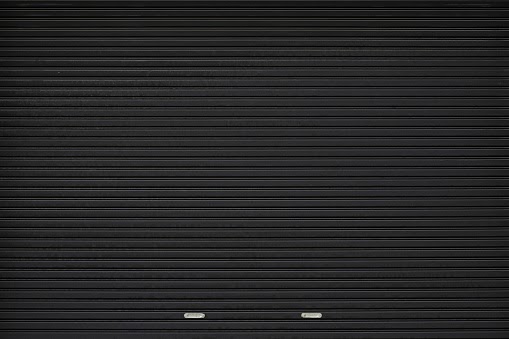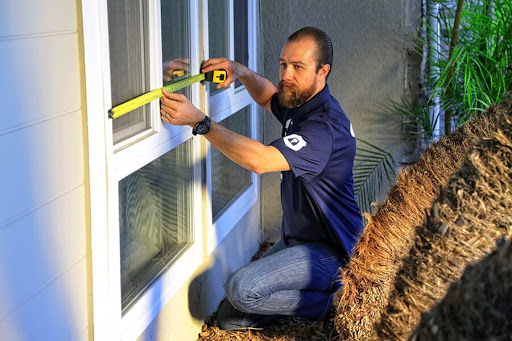Certain regions in the US experience extremely stormy weather, such as hurricanes and tropical storms. For example, regions in the Southeastern US (especially Florida) often take the brunt of the storm. If you live in any of these areas, you’ll need some form of hurricane window protection.
Hurricane protection products are needed to keep you and anyone else inside your home safe during a storm and to protect your property from costly damage. Storms are incredibly dangerous and can level a house or flood a huge area in a matter of hours. This form of physical property protection is crucial in preventing injury and large-scale financial losses.
Why do you Need Hurricane Protection for Doors and Windows?
The Importance of Choosing the Best Hurricane Window Protection
You’ve probably been in a situation where a stray ball or pebble managed to shatter a window or a glass door. Now, imagine how much more dangerous such objects can be when they get hurled by hurricane-force winds.
Here’s an important fact to consider: Even the ‘weakest’ hurricanes (Category 1) can produce sustained winds with speeds up to 95mph. The strongest hurricanes, Category 5s, can have winds of more than 155mph speeds!
The most dangerous aspects of hurricane storms are floods and debris. Not only does debris have the potential to cause immense damage to your household, but shattered glass can be thrown inwards, potentially causing injury to people inside the home.
And, if your windows and doors end up in pieces, your household will become susceptible to flooding that can cause even more damage and ruin electrical systems which are costly and time-consuming to repair.
To put it bluntly, traditional windows and doors provide no resistance to storm winds and are a liability. We understand that investing in hurricane protection products may not appear necessary, but unless you live in hurricane and storm-free areas, they will save you money on damage cleanup, glass replacement, and even insurance premiums, not to mention the protection they provide for people inside the building.
Here are the primary reasons to make hurricane window protection improvements to your home:
- Avoid broken windows and glass doors which would require glass replacement
- Prevent the possibility of bodily injury due to flying glass shards
- Keep water out of your property during a storm
- Save money on annual insurance premiums
How to Protect your Windows During Hurricanes?

A More Detailed Look at Existing Hurricane Window Protection Options
Luckily, modern technology has allowed us to create some pretty versatile and rugged hurricane window protection methods. You’ll be able to choose from a couple of options based on your budget and goals.
Keep in mind, however, that each method is unique in what it can and cannot do. Some of the metrics you should think about when choosing an option are the option’s convenience, strength against stormy weather, and how it influences your property’s aesthetics and curb appeal.
Here are some of the most common, effective, and affordable hurricane protection options:
- Plywood Boards
- Hurricane Fabric
- Storm Panels
- Hurricane Shutters
- Laminated Security Glass
Plywood Boards

This is arguably the most common method of protecting your home from hurricane damage because it’s cheap and does a good job protecting glass. However, it is fairly labor-intensive due to having to do measurements and cut the plywood ahead of time.
On top of that, you probably won’t be doing this yourself because that would take even longer and would be more difficult, so you’d get help screwing or nailing the boards into place.
Unfortunately, plywood boards also block out natural light and aren’t very nice to look at. This can be problematic for business owners who want to protect their stores but want to stay open until the moment the storm hits the area.
However, once the storm passes (or misses your area), you’ll have to store those boards somewhere which is both unsightly and takes up a lot of space. Having said that, plywood boards are a great choice if you’re on a budget and don’t mind the work.
Plywood board pros:
- Very affordable
- Creates a durable & strong barrier
- Keeps glass intact by deflecting storm debris
Plywood board cons:
- Requires plenty of storage space
- Very labor-intensive
- Aesthetically unappealing
- Blocks out natural light
Hurricane Fabric
Hurricane fabric appeared as a hurricane protection method that’s incredibly easy to use and fairly affordable. The fabric itself is similar to trampoline fabric (to the touch) and all you have to do is stretch it over your windows and glass doors.
This hurricane protection option takes less space when in storage and allows some natural light to filter through the windows.
The downside of hurricane fabric is that it just isn’t strong enough to withstand constant barraging of debris and usually can’t stop larger debris. There’s also concern regarding debris bouncing off the fabric and damaging other nearby property.
Nonetheless, if you live in generally calmer areas where storms don’t reach their full strengths, hurricane fabric can be a viable choice.
Hurricane fabric pros:
- Takes up little storage space
- Some natural light passes through
- Very easy to use
Hurricane fabric cons:
- Debris that bounces off the fabric can damage other property
- Weaker than other hurricane protection materials
Storm Panels
Storm panels are considered the commercial alternative to plywood boards. Think of sheet or corrugated metal or plastic. These also require measuring and cutting before applying them to windows and doors.
Storm panels are very strong and capable of withstanding even heavier debris impacts. When not in use, you’ll have to store them the same way you would plywood panels - which means they take up quite a lot of space.
And, similarly to plywood panels, you’ll have to do some labor-intensive work here as well. As you may have noticed, metal storm panels share almost all of the characteristics of plywood panels, except that they’re stronger and there are storm panel types that are see-through, allowing some natural light through.
If you decide to leave your storm panels up throughout the hurricane season, then it might be better to opt for clear panels that look better than their metal counterparts.
Storm panel pros:
- Strong and highly durable
- Can be left up throughout the hurricane season
- Custom-cut to fit over your glass or doors
- Comes in see-through variants as well
Storm panel cons:
- Aesthetically unappealing
- Require storage space when not in use
- Needs to be installed in advance
Hurricane Shutters

Hurricane shutters come in all shapes and sizes and are one of the more traditional hurricane window protection options. Compared to all the others we’ve mentioned up until this point, they are the most practical, versatile, and aesthetically pleasing - but that also makes them the most expensive.
The main hurricane shutter categories are:
- Colonial-style louvered shutters
- Roll-down hurricane shutters
- Accordion shutters
- Bahama/Bermuda shutters
Colonial-style shutters feature two louvered shutter panels that are attached to the wall next to a window. All you have to do is fold them towards each other to protect the glass from damage.
Roll-down shutters can be rolled up into a metal box that’s affixed above the windows. When the storm is about to hit, you simply lower the shutters into position. Roll-down shutters provide retail stores with robust protection against the devastating winds and debris of hurricanes, ensuring both inventory and infrastructure remain secure.
Accordion shutters are attached to the side of a window or glass door. They need to be unrolled to cover the glass which you do by hand. Accordion shutters are great for protecting sliding glass doors.
Bahama/Bermuda shutters are single-piece louvered panels that are attached above the window and are propped open using a rod or bar. They’re most similar to colonial-style shutters but these can also provide shade when they’re propped up above the windows.
Hurricane shutter pros:
- Easy to use
- Aesthetically pleasing
- Effective hurricane window protection
- Plethora of styles to pick from
Hurricane shutter cons:
- More expensive than other hurricane window protection options
- Limit visibility and block out natural light
- Must be professionally installed ahead of time
- Needs to be lowered into place manually
Laminated Security Glass

Laminated security glass might be a first for you but it’s been a staple of our business for a long time. Here’s the deal: Laminated glass features a thermoplastic interlayer that’s placed between two sheets of glass.
Our Riot Glass® line of laminated security glass is highly effective when it comes to hurricane protection. It looks just like regular glass and allows the same amount of natural light inside your home, but the thermoplastic interlayer can prevent breakage and disperse high-speed impacts.
You’ll get window protection against hurricanes, debris, and other threats on a 24/7 basis, without damaging the aesthetics of your property or sacrificing your views.
Immense forces can damage Riot Glass® but it’s made in such a way that it’ll retain its strength and shape, keeping water and storm debris out of your home.
Lastly, Riot Glass® is easily retrofitted into or onto existing window framing, meaning you won’t have to replace your glass completely.
Final Thoughts on Hurricane Window and Door Protection
If you’re in the process of purchasing hurricane protection for your property, make sure to remember that no one method is 100% effective. Anything can go wrong so it’s usually a good idea to pair multiple options together, just in case.
Analyze and compare the advantages and disadvantages of various hurricane protection options and consider how exposed your home is during a hurricane or storm event.
Contact us at Campbell Window Film to learn more about hurricane protection methods or to inquire about Riot Glass® window protection.






